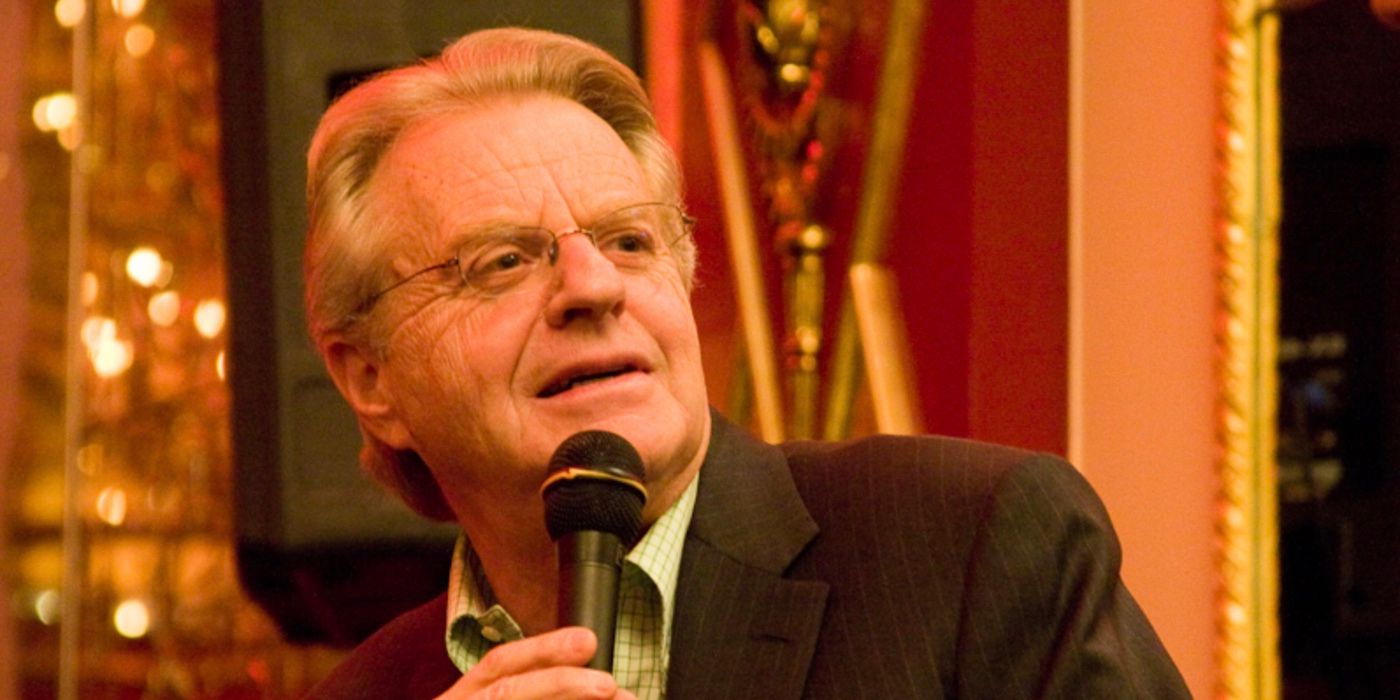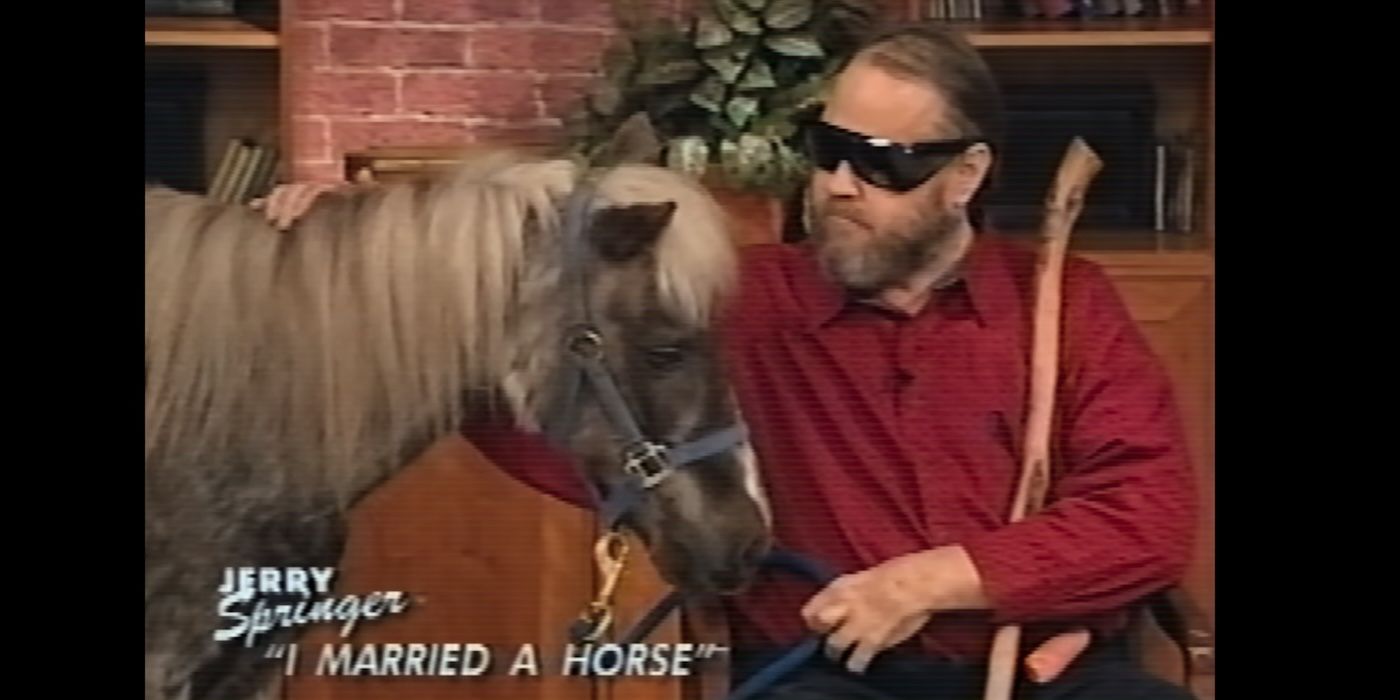The Jerry Springer Show first aired in 1991 as a Chicago-based talk show with a focus on political issues. But with ratings dropping and unhappy executives, an overhaul in the mid-’90s led to a format change that would take the show in an entirely different direction. Rather than politics, the show began to focus on the everyday problems of the guests brought onto the series, and the more sensationalized and outrageous the problem, the higher the ratings grew. The show became synonymous with trash TV, shining a spotlight on individuals who were often dealing with issues such as incest, infidelity, and paternity scandals.
The Jerry Springer Show became known not only for its outrageous subject matter, but also for the physical altercations that would frequently break out on set, with chairs and punches being thrown, and security guards required on stand-by to break things up when they escalated too far. The recent Netflix documentary Jerry Springer: Fights, Camera, Action calls attention to the series producers’ dedication to dialing up the drama, even rehearsing confrontations with contestants before the episodes, or coaching them with gestures and inflammatory language.
The documentary also draws attention to the often-questionable ethics behind the choice of subject matter featured on The Jerry Springer Show over the years, including several instances that involved actual crimes. While the shocking violence that often erupted on stage got the majority of the focus in the media, one episode, in particular, was an off-putting “love” story that caused significant uproar when it aired.
‘The Jerry Springer’ Show Encouraged Violence On Stage
The Jerry Springer Show built its audience off the outrage and excitement surrounding the physical altercations it featured on stage. Springer would remain a neutral observer, often expressing judgment and condemnation over what occurred with his guests, while appearing to restore order when possible. But the big question about the show eventually became, is it responsible for the violence that occurred between the guests once the episode aired?
One case discussed in the documentary Jerry Springer: Fights, Camera, Action was the murder of Nancy Campbell-Panitz, who had appeared on The Jerry Springer Show to confront her ex-husband and was later murdered by him on July 24, 2000, the same day the episode aired, according to the Midland Reporter Telegram. Another case involved a man who was surprised to learn on the show that his fiancée and best friend had been having an affair. He later killed himself a few weeks after the episode aired.

Related
Jerry Springer, Legendary Talk Show Host, Dead at 79
‘The Jerry Springer Show’ was a ratings smash, even topping Oprah Winfrey.
In an interview with Belfast Telegraph, Springer maintained that the show always exercised the proper duty of care when it came to preparing the guests for what would happen on stage and has repeatedly rejected the idea the show is to blame for these incidents unfolding after the fact. The violent acts that occurred on stage and after the episodes aired are often a focal point when it comes to criticism leveled at the talk show, but there was another criminal act that the show featured which came under the guise of love.
That Time ‘The Jerry Springer Show’ Featured Bestiality — and Things Were Never the Same
The episode titled “I Married a Horse” was controversial from the start, featuring a man who had left his wife and daughters to “marry” a Shetland pony. Unearthed footage featured in the Netflix documentary shows the man on stage with the pony, petting and kissing the animal in a way that was a literal crime. The decision to pull the episode after it hit the New York City airwaves was reportedly the result of discussions between the show’s syndicator, Studios USA, and producers of The Jerry Springer Show, who had settled on providing a backup episode instead. But the fact that the episode, which included three different stories of bestiality, was even sent to air at all shows exactly how disturbing the casting process on the series had become.
Outrage over the episode was swift, including a sternly worded letter from former U.S. Education Secretary Bill Bennett and Senator Joe Lieberman, who denounced the decision to air the “repugnant” and “reprehensible” segment. Bennett and Lieberman wrote a warning about how the episode sends “a disturbing message to America’s families about the lengths that the TV industry will go to make an extra dollar.” Despite the controversy at the time the episode aired and the continued moral outrage surrounding its production, remarkably, the producers of the episode seemingly had no regrets.
When the production team discussed the episode in the Netflix documentary, producer Toby Yoshimura recalled the phone call where he first spoke with the man married to the pony, excitedly referring to it as a “dream” scenario. Executive producer Robert Dominick fondly recalled that the episode was “everything I ever wanted it to be.” Producer Melinda Chait Mele gloried the episodes’ ability to pull audience attention, noting the fact that the episode was banned and that it was reported in every major newspaper meant the story was “the train wreck you can’t rip your eyes off of.”
The divisive episode drew attention to increasingly outrageous, and possibly desperate, avenues the talk show was willing to go down to feature a shocking story on daytime TV, and truly moved the bar on what was acceptable to share in the media. The talk show first aired at a time just before the internet made access to shocking content a mundane part of daily life, and it was quietly shuttered in 2018, after a presumed decrease in ratings in the digital age.
Jerry Spring: Fights, Camera, Action is available to stream on Netflix in the U.S.
Watch on Netflix

